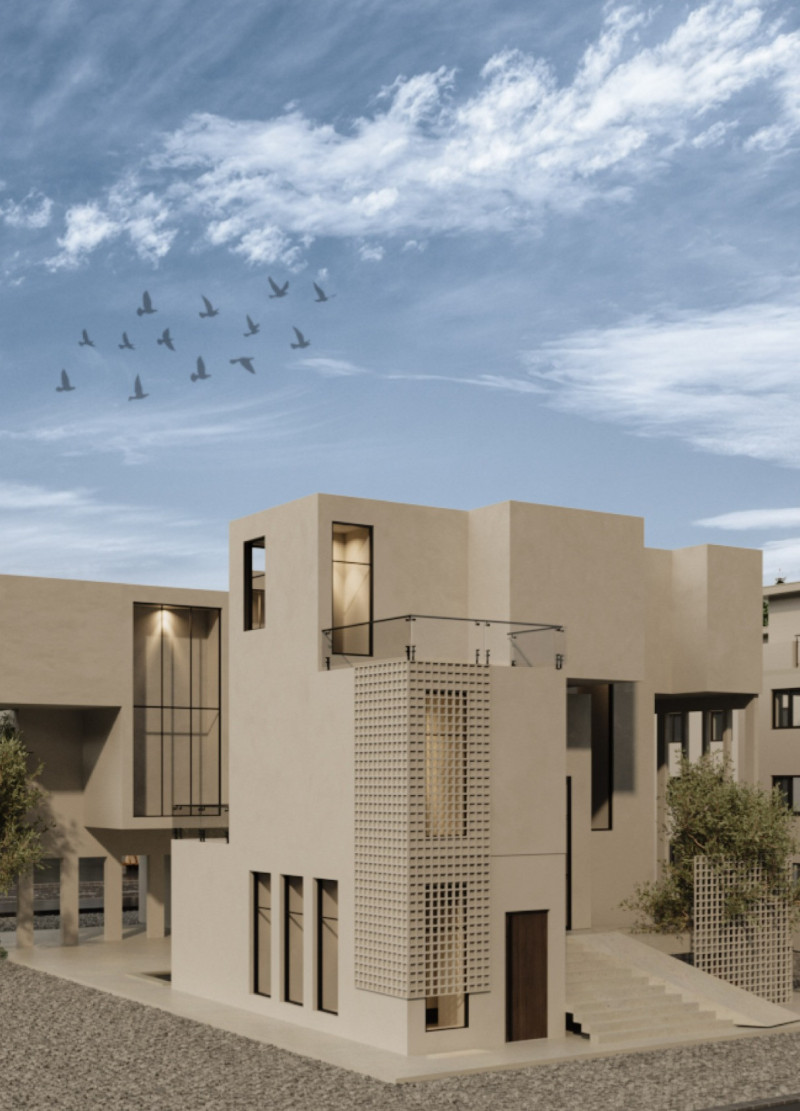5 key facts about this project
At its core, the project serves as a multifunctional space, embracing various uses that cater to both community engagement and individual pursuits. It is designed to facilitate interaction, learning, and events, indicating a versatile approach that acknowledges the dynamic nature of contemporary life. The architectural design emphasizes the importance of adaptability, with spaces that can transform based on changing needs, underscoring a forward-thinking ethos.
The design incorporates a blend of materials that not only enhance its aesthetic but also promote sustainability and efficiency. Key materials include concrete, glass, and steel, each selected for their durability and performance characteristics. The use of concrete provides structural integrity and thermal mass, while expansive glass elements establish a connection between indoor and outdoor spaces, flooding interiors with natural light and offering visual links to the environment. Steel accents add a modern touch, allowing for clean lines and precise detailing throughout the project.
Unique design approaches are evident in several aspects of the architecture. The building’s layout may reflect an organic flow, guiding occupants through various zones without abrupt transitions. This thoughtful spatial arrangement encourages exploration and interaction. Additionally, the roofline might showcase creative geometries that not only serve aesthetic purposes but also optimize natural light and ventilation. Such features contribute to a pleasant microclimate within the building, enhancing inhabitants’ comfort and wellbeing.
Landscaping plays a critical role in the overall project, with outdoor areas seamlessly integrated into the design. Green spaces, pathways, and seating areas are meticulously planned to foster a sense of community and encourage outdoor activities. The landscape design aligns with sustainable practices, potentially incorporating native plant species that require minimal maintenance and provide habitats for local wildlife. This approach affirms the project's commitment to environmental stewardship and community well-being.
Furthermore, the technological integration within the architectural design reflects a modern understanding of efficiency and smart living. Innovative systems for energy management, such as solar panels and smart HVAC solutions, may be incorporated, aiming to reduce the overall carbon footprint while enhancing user experience. This focus on technology harmonizes with the aesthetic elements of the architecture, illustrating a comprehensive design philosophy.
The project stands out not only due to its functional versatility and sustainable practices but also because of its cultural sensitivity and responsiveness to its urban context. The design respects the historical and cultural nuances of its location, creating a dialogue between the new structure and its surroundings. This responsiveness reinforces the notion that architecture is not merely about constructing buildings; it is about creating environments that enrich lives.
For those interested in delving deeper into the architectural nuances of this project, exploring architectural plans, architectural sections, and architectural designs will offer valuable insights. These elements reveal the intricacies that shape the project, providing a clearer understanding of the thought processes and design ideas that underpin its realization. The invitation is extended to engage with the full presentation of the project, where every detail contributes to a greater narrative that encapsulates the essence of thoughtful architectural design.


























